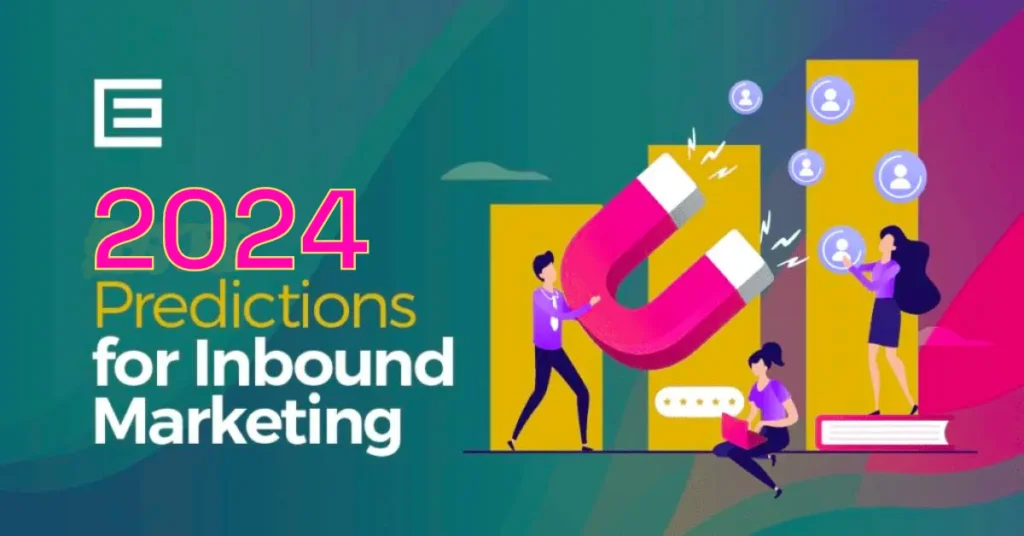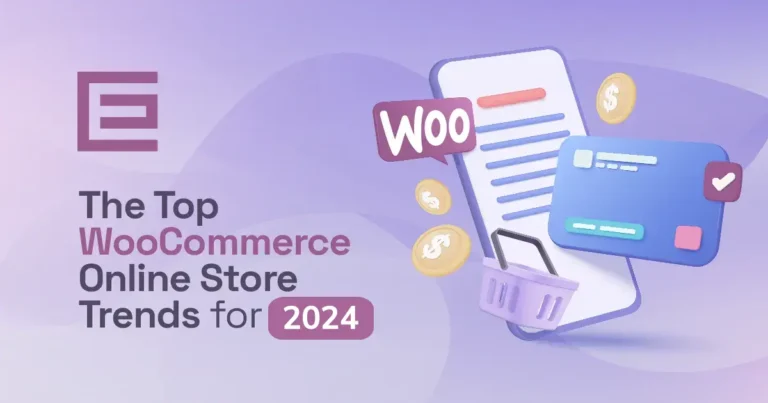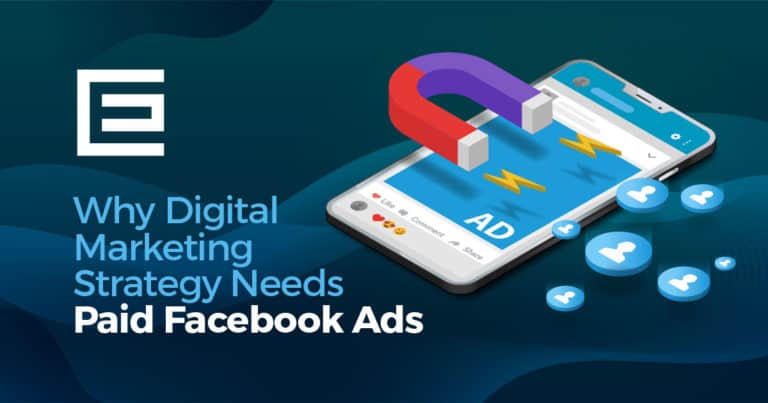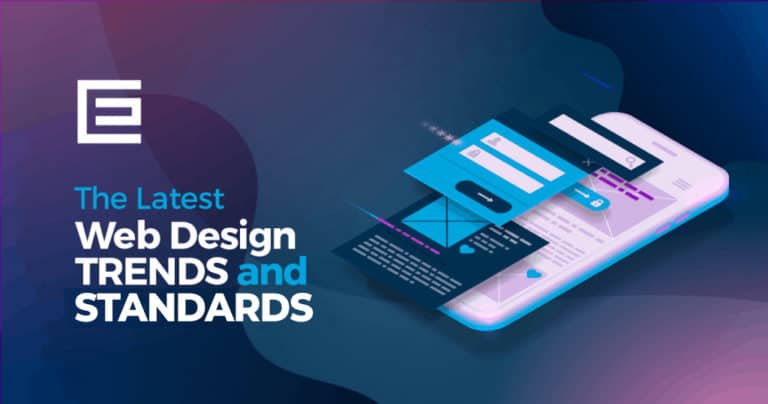Too soon for 2024 marketing trends? Not at all! Based on what data has shown us over the past few years, we’re predicting what the 2024 inbound marketing trends will produce – and how AI could change the digital ecosystem!
What Is Inbound Marketing?
Inbound marketing is a methodology that focuses on content creation to attract audiences and move them through your sales funnel. The goal is to create evergreen content that connects you to your customers and creates long-lasting relationships.
Unlike traditional outbound marketing, which relies on interruptive tactics like cold calling and advertising, inbound marketing aims to pull potential customers toward a brand organically. This methodology focuses on building meaningful relationships with the audience through various channels such as blogs, social media, and search engine optimization (SEO).
By providing valuable content that addresses the needs and interests of the target audience, inbound marketing aims to establish trust, credibility, and brand loyalty over time.
Examples of Inbound Marketing Assets:
- Blog Posts: Regularly publishing informative and relevant blog content helps attract visitors to your website, improves search engine rankings, and establishes your brand as an industry authority.
- Social Media Content: Sharing valuable content on platforms like Facebook, Twitter, LinkedIn, and Instagram helps increase brand visibility, engage with your audience, and drive traffic to your website.
- Ebooks and Whitepapers: In-depth, downloadable resources provide value to your audience and can be used as lead magnets, requiring visitors to provide their contact information in exchange for the content.
- Infographics: Visual content, such as infographics, can simplify complex information and make it more shareable, increasing your content’s reach and engagement.
- Webinars: Hosting webinars allows you to share knowledge, interact with your audience in real time, and position your brand as an expert in your field.
- Podcasts: Creating audio content through podcasts can reach audiences on the go, providing insights, interviews, and discussions relevant to your industry.
- Email Campaigns: Sending targeted and personalized emails helps nurture leads, provide valuable information, and guide potential customers through the sales funnel.
- SEO-Optimized Content: Optimizing website content for search engines helps improve organic visibility, making it easier for potential customers to find your business when searching online.
- Case Studies: Sharing success stories and real-world examples of how your product or service has benefited customers can build credibility and trust.
- Interactive Content: Quizzes, polls, and interactive tools can engage your audience and provide personalized experiences, encouraging longer interactions with your brand.
How to Develop an Inbound Marketing Strategy
The hottest inbound marketing trends involve interactive content, properly leveraging social media platforms, and reimagining the customer experience. Inbound marketing strategy often relies heavily on search engine optimization (SEO) to put your content at the top of the search results, as well as customer data, and social media engagement.
1. Review Customer Data
You’ve heard the saying, “If it ain’t broke, don’t fix it.” That’s true for your inbound marketing strategy. If you have an asset such as a video or a blog that’s been performing well and attracting traffic or leads, look for ways to optimize it. But if there’s a blog that’s just a powerhouse lead-generating machine, then let it churn. Explore supporting content ideas to link to your winning asset and capitalize on what’s working.
If there’s no clear front-runner when reviewing your website’s analytics, check out social media to see how your posts have been performing. Look at things such as comments, likes, shares, and overall engagement.
2. Size Up Your Competition
Let’s say user activity is falling flat on your website and on social media – take a look at what your competitors are doing that’s gaining traction on their social media channels.
3. Conduct Keyword Research
How do you know what content will attract users if you don’t know what people are searching for? You should regularly conduct keyword research to see what types of questions your users have about your products or services. Aim to answer commonly asked questions, solve problems, offer tips, or create how-to content.
No matter what question is being asked: every user is searching for the promise of transformation, so make sure your content is value-packed and reaffirms your subject matter authority.
4. Use AI
In 2024, more brand will be using AI to help them create more content than ever before. Leveraging AI in your marketing strategy can help you stay on top of inbound marketing trends within your industry. If you learn how to create the right prompts and deliver context to AI tools, you’ll be able to lay a solid foundation for your quarterly or yearly marketing strategy in a matter of minutes!
Tools such as ChatGPT can help you generate a solid blog editorial calendar, social media copy, and even an email outline that pairs with your content flow. There are even tools that can generate video content, images, and audio with just some simple instruction.
Of course, you don’t want all of your content to be generated by AI. At the core, people want to connect to a voice, a purpose – not a robot. So be sure to include your brand’s message and tone naturally. AI should only ever be a supporting tool or a way to help offload some manual work.
Consider using AI to help your team produce more content than ever before – and see how your traffic skyrockets because of it.
Top Inbound Marketing Trends & Predictions
Now that you understand what inbound marketing is and the various ways in which you can build out your strategy, let’s check out some of the common inbound marketing trends!
1. Short-Form Video Content
Short-form video content originally gained popularity among younger crowds through apps like Vine and Instagram. Today, quick video snippets are thriving in all age groups and demographics on platforms like TikTok, Instagram, YouTube, and Facebook. If you’re not using video platforms in your 2024 inbound marketing strategy, you will miss out on a massive portion of your potential target audience – no matter what industry you’re in.
Video content isn’t just for fashion brands and social activist groups. Lawyers, dentists, and HVAC companies are now using video to promote their services. Video marketing is a key part of the inbound marketing strategies for many companies in 2024 – make sure it’s part of yours.
There are three main places to focus your inbound marketing efforts for video content:
- TikTok
- Instagram Reels or IGTV
- YouTube Shorts
Video content produces the 2nd highest ROI for B2C brands.
To really win in this space, keep these three video marketing statistics in mind:
- Landing pages with video content convert 86% more often.
- 85% of Facebook videos are watched without sound.
- 69% of people prefer video over text when learning about a product or service.
2. Influencer + Social Media Marketing
Social media marketing through influencers is known to create some of the highest ROI for B2C brands.
Inbound marketing using interactive content in a marketing campaign directed at the followers created by someone else is a great strategy.
Why Influencer Marketing Works
A. Brand Awareness
Brand awareness through video content is a strong way to reach your target audience. Since we know 69% of people want to learn about new products using video, it makes sense to pair video marketing with the influencers your target audience already follows and trusts.
B. Existing Audiences
Marketing campaigns can spend a lot of money identifying and targeting the best audience to generate relevant traffic. Using an influencer makes this easy because they already have organic traffic produced at their expense. Instead of finding the right audience, you only have to find the right influencer.
C. Consumer Testing
Consumer behavior on social media is different than on a search engine results page. Social media focuses on interactive content through engagement. Likes, shares, comments, and follows are all part of the way people use social media. This makes it an ideal way to test how customers interact with your brand and services.
What size influencer should you choose?
Here are the tiers of influencers and their effectiveness as ranked by fashion, cosmetics, and luxury marketers in Europe and the US:
- Micro Influencers (10K-100K followers) – 45.8% agreed these were the most effective.
- Macro Influencers (101K-500K) – 33.6% thought these were the most effective.
- Mega Influencers (501K-1.5M) – 9.3% said these were the most effective.
- Celebrity Influencers (1.5M+) – 11.3% reported these were the most effective.
As you can see, influencer size doesn’t necessarily translate to influencer effectiveness. So, when you launch an influencer marketing campaign, you should monitor your marketing performance carefully.
The best thing to do is to run multiple influencer marketing campaigns using influencers with different sizes of audiences. Compare the results to see which size of audience produces the best return for your inbound marketing spend.
3. Podcasts & AudioBooks
Video content is not the only form of interactive content available for marketing leaders. Audio, such as podcasts, talk shows, and even audiobooks, is a viable way of creating inbound traffic.
Traditional advertising relied heavily on audio. Radio ads were common and they were used to increase brand awareness across towns, cities, and even larger areas.
Podcasts could be a powerful inbound methodology for brands whose focus is on educating consumers, reaching out to a slightly more mature audience, and trying to increase audience engagement.
On that note, if you’re looking for a swanky, new digital marketing podcast to add to your lineup check out TheeDigital’s GrowthCast on Spotify or YouTube to learn about SEO, custom web design, PPC, and other inbound marketing tools!!
Here are some podcast statistics that show the relevance of this marketing strategy:
- 66% of people prefer podcasts over TV.
- 58% prefer podcasts over social media
- 96% like podcasts more than newspapers
- 74% of people listen to podcasts to learn new things
So, if your marketing funnel includes a learning stage where the goal is to engage customers and help them learn more, then podcasts could be a great marketing technology to reach those customers.
4. Chat Bots & Messaging Apps
One incredibly useful feature that is – for some reason – vastly underutilized is the use of chat bots. We live in an age of instant gratification. If you live in a major city, it’s likely that if you order something online in the morning, by nightfall, it’ll be on your doorstep.
Your business is competing with those expectations and that level of customer satisfaction. Even if you just sell services, you need to be able to offer your customers instant answers to their questions – or they’ll find it somewhere else!
Consider adding a chat feature to your website. This floating invitation should welcome website users to get custom and useful answers to their questions. Make sure when you set your automated responses up, you’re thinking about user intent. The last thing you want is to frustrate your potential customer before actually speaking to them.
HubSpot has a free chat feature that you can easily set up on your website. This platform is a full customer relationship management tool – and one that could help your business improve its operational efficiency and customer communication. If you don’t already use a CRM or need to upgrade to one that works for your growing business, contact us. We are a HubSpot certified marketing agency, meaning we can guide you to the tools that will best suit your business.
5. Evergreen Content is King
Creating valuable content has been one of the key inbound marketing trends for the past 25 years and it will remain that way for a long time to come. But what is “evergreen content”?
Evergreen content refers to the lifespan and lasting usefulness of a piece of content. For example, this blog post as a concept is considered evergreen content; however, since we do update it every year to keep up with the new inbound marketing trends, one could argue that it’s not technically evergreen. By default, evergreen content should be rare, “set it and forget it” assets that provide value to consumers for an extended period of time.
Wondering why content and inbound marketing is so powerful? Here are three reasons why content may always be king:
- Paid media, email marketing, and funding a sales team are all expensive and their costs rise over time. Inbound marketing through interactive content can be much less expensive, and thus more cost-efficient.
- Using artificial intelligence to identify valuable search queries and target them for lead generation makes inbound marketing through content creation even more effective.
- Social media vastly increases both the reach and engagement with new content. Consumers can interact with their brands and share their favorite products easier than ever before.
Content Is Everything
Your brand is conveyed not just by your products or services, but by the messages you send to consumers. Your brand is your content.
One way to think of inbound marketing is to realize content is everything and everything is content. Your company newsletter could be just as valuable as your influencer marketing if it is used correctly. Every blog post is an opportunity for lead generation. Email marketing isn’t just a cold writing exercise. It’s an opportunity to create content that can be an integrated part of your marketing plan.
Best Types of Content Marketing:
- Blog Posts/Short Articles – 93%
- Email Marketing – 77%
- Case Studies -68%
- Videos (pre-produced) – 68%
- Virtual Events/Webinars/Online Courses – 67%
- Infographics/Charts/Photos – 65%
- Ebooks/Guides – 54%
- White Papers – 47%
- In-Person Events – 42%
- Long-form Text (e.g., articles 3,000+ words) – 32%
- Videos (livestreaming content) – 29%
- Research Reports – 28%
- Podcasts – 26%
These marketing statistics show the variety and amount of content being created. Companies with a genuine commitment to content marketing are investing in high-quality content every single week.

6. Mobile Apps
People use mobile devices for loads of things. Directions to unknown places, scheduling appointments, setting reminders, and making purchases all happen on phones and tablets every day.
Heavy mobile usage is an opportunity for marketing content, but it’s also a barrier. Many website owners don’t create mobile sites. Instead, they rely on “mobile-friendly” sites and hope for the best.
There is a better way to reach customers on mobile devices: build a mobile app.
Here’s why you should build a mobile app as soon as possible:
- You can use your mobile app to deliver much greater personalization because your app will collect more data about your customers. Applying machine learning to this data may increase the ability to generate leads from customers.
- Push notifications based on customer data are a much better form of interactive content than an email message. These notifications are a great way of reaching customers without being too intrusive.
- Apps have many more options than websites, such as being able to work offline, connect to phone functions, and utilize more branding alternatives.
If you don’t already have an app, now is the time to start building one.
7. Marketing Automation
Marketing is the act of reaching out to customers and sales is the art of closing the deal. One of the more powerful inbound marketing trends is the shift to bring marketing and sales together. This can be done using newsletter campaigns or chat flows.
An effective strategy is to bring marketing and sales together to reach customers and close the deal at the same time. Marketing automation brings these two functions together.
How does this work?
- Decide what you are doing and which tasks can be automated.
- Define your target audience as clearly as possible.
- Determine the best automated tool for your goals.
- Delegate and distribute work amongst your team members.
- Describe your goals and measure your progress.
Artificial intelligence and automation combine to form one of the best inbound marketing trends of 2024. They are a force multiplier for your marketing team.
One of the most effective ways to automate your marketing workload is to leverage the use of a powerful CRM like HubSpot. You can set up powerful workflows for your team and your customers that act in the background on behalf of your company. Set up custom actions like an email open that triggers events like sending a follow-up email if the reader does not take the desired action.
In this way, you can actively engage with your customers without you or your team having to do the legwork every time. If you need help setting up a CRM or marketing automation tool, reach out to our digital marketing agency team. We’ll be happy to help you decide which type of marketing automation platform suits your business!
8. Specialist Roles
One of the inbound marketing trends that will impact companies is the rise in specialist jobs. Machine learning and the growth in customer numbers and data make the need for specialized marketing teams more acute than ever.
Here are some examples of digital marketing jobs that didn’t exist ten years ago:
- Chief Listening Officer – This person monitors the communication with customers across all channels, especially social media. Their reports reveal the effectiveness of the company’s marketing campaign.
- SEO Specialist – Having a person dedicated to just SEO is a new change in the job market. Yet the data available and the increasing competition for ranking invaluable Google search results make this an important role.
- UX Designer – Customer experience has become one of the hot marketing trends. The idea is to delight customers during every interaction with the company. A dedicated designer makes this more possible.
When you view your company, what is the next hire you could make to unlock progress in your marketing strategies?
9. Outsource to a Digital Marketing Agency
While some companies are keeping their marketing in-house, most small to mid-size businesses are outsourcing their marketing efforts to a designated digital marketing agency. This inbound marketing trend is growing in popularity due to its economic and practical usefulness.
With this strategy, there’s no need to hire one marketing specialist or a full marketing department! You get the resources of a full team of specialists at a fraction of the cost. Plus, most quality marketing agencies don’t force you into a contract – so if you’re unhappy with the results, you can shift gears and find another agency!
Final Word: Inbound Marketing Trends 2024
The most expansive trends are inbound marketing automation, influencer marketing, and increasing personalization through the use of data. Now is the time to change your marketing strategies and team makeup to make the most of these changes and build more sales in 2024.
Looking for help with your internet marketing? Contact the Raleigh SEO and internet marketing professionals at TheeDigital in Raleigh, NC at 919-341-8901 or schedule a consultation.
Tags: Digital Marketing • Inbound Marketing



